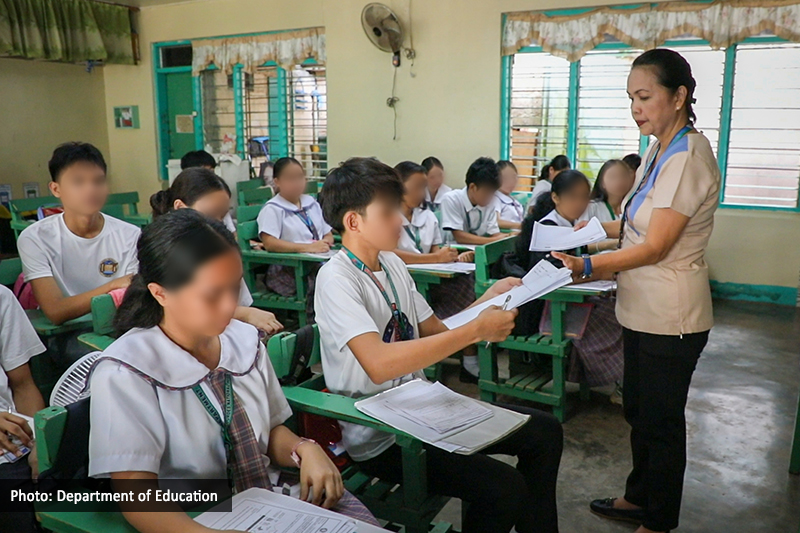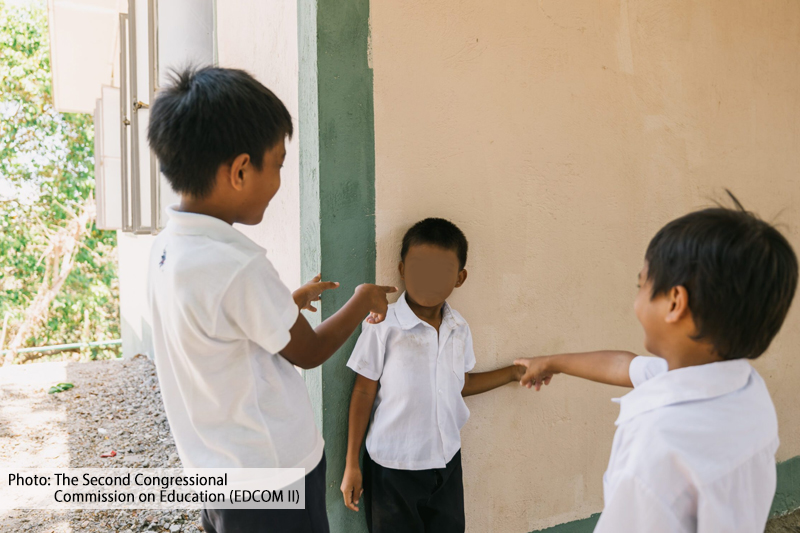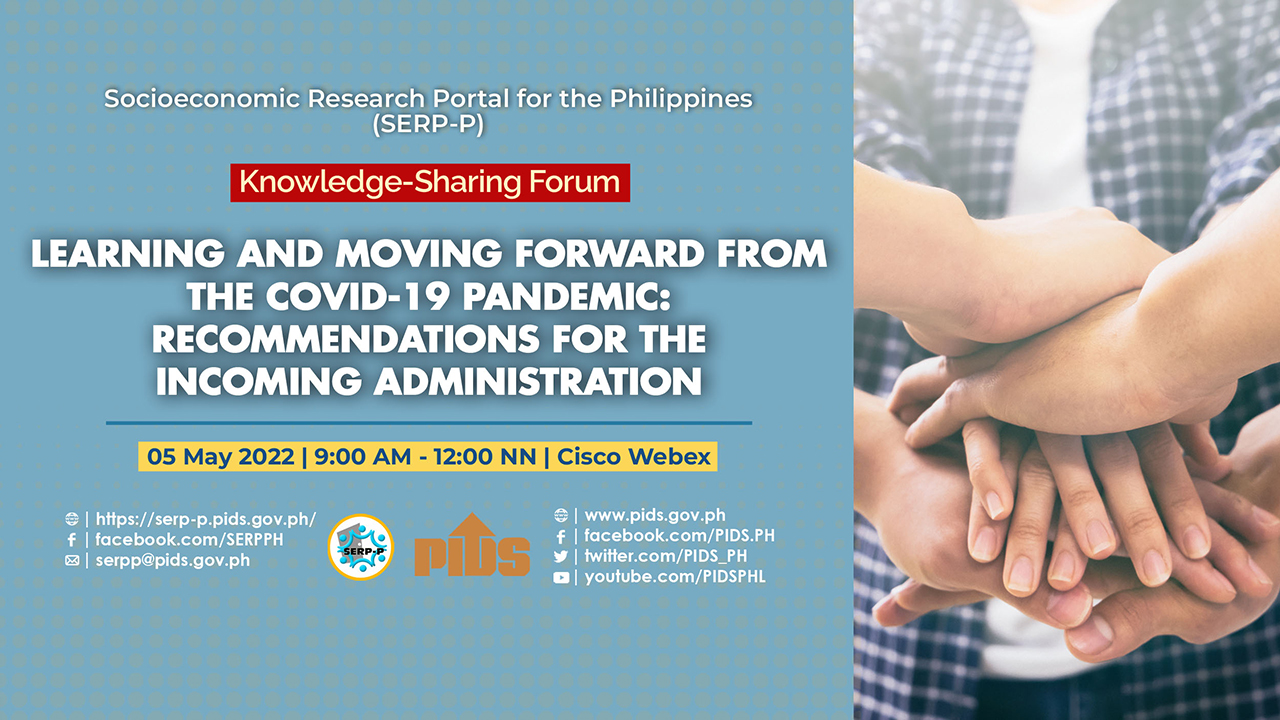
Given suboptimal performance and persisting inequitable access, the Philippine education system needs swift action to address the current education crisis.
This was according to a study published by state think tank Philippine Institute for Development Studies (PIDS), authored by PIDS President Aniceto Orbeta Jr. and Distinguished Visiting Research Fellow Vicente Paqueo, that explored the current condition of the country’s trifocal education system.
According to Orbeta and Paqueo, the Philippines has the same level of school attendance as wealthier nations, yet the education system continues to struggle from producing high-quality outcomes. “The country's performance in international large-scale assessments confirms we have been in a learning crisis for a while now. A vast proportion of our students are below minimum proficiency levels in reading, science, and mathematics,” they said.
“While it has been denied that automatic promotion is the official policy, the test results showing a huge proportion of students not having the required competence of the school level they are in is a piece of compelling evidence that this may not be the case,” they added.
Based on World Bank’s Human Capital Index, the learning gap estimated for the Philippines is about 5.5 years, which is larger than its Asian neighbors. “This means an average Filipino student spends more time in school but is less productive than his/her counterparts in other countries,” the authors said.
Moreover, the quality of higher education in the country is “uneven”, which Orbeta and Paqueo said can be traced to the low quality of basic education. Only a few Philippines universities are on the list of top universities in the world rankings.
“Inequitable access [also] persists” in higher education. “In 2019, while 49 percent of the richest decile attend higher education, only 17 percent from the poorest decile can do so. The poor are underrepresented even in public higher education institutions. It remains to be seen whether the free tuition in public universities and colleges will increase the participation of students from poorer households,” the authors said.
Orbeta and Paqueo also examined the challenges of remote learning during the pandemic. Based on Department of Education (DepEd) data, most basic education public schools used printed modules, while private schools used online learning. According to them, the schools’ chosen learning modes not only reflect the country’s connectivity issues and the differences in clientele but also “highlight the disparity in access to the internet, access devices, and home support required by remote learning”.
They likewise explained that “the outcomes of home learning also depend on the quality of home support as parents and guardians” who serve as primary teachers at home. Philippine Statistics Authority data show that an average of 26 percent of household heads finished secondary high school, but the numbers differ notably in the richest and poorest deciles, which are at 69 percent and 9 percent, respectively. “This points to the likelihood that learning loss with remote schooling will be more pronounced among the children in poorer households,” they said.
The authors cited several reasons for the current state of Philippine education, such as the focus on education access at the expense of quality, the country’s low education spending vis-à-vis the gross domestic product compared to neighboring countries, policies that marginalize the private sector, and lack of access to “granular” results of national achievements tests for in-depth analysis and public discussion, among others.
As for Technical and Vocational Education and Training (TVET), the study found that both the composition of graduates and their reason for studying have shifted. “College graduates and beyond” comprise the largest group (36%) of VET graduates, followed by university undergraduates (23%) and old curriculum high school and new curriculum junior high school graduates (16%). Their top reason for taking up TVET was skills upgrading or enhancement (42%). Employment came second (35%) and personal use, interest, or hobby, third (15%).
While it is impossible to resolve the crisis overnight, the authors noted that all relevant sectors should collaborate to improve the quality of education. “We should focus more on improving quality because our attendance rates are already high. The DepEd’s current thrust on quality, dubbed Edukalidad, is a step in the right direction. But the challenge is always on the details,” they said.
Among the recommendations mentioned in the study are making data on school quality and test scores public, developing systematic remedial programs for lagging students, reviewing learning time in schools, creating an independent oversight body for generation and reporting on key education statistics, investing in early childhood development including early childhood nutrition interventions, increasing support for teacher training, and financing “better-performing” private schools, which have excelled in test assessments.
The government may tap private schools by giving more scholarships or vouchers. With vouchers, students may opt to attend a private school.
“The Education Service Contracting, Senior High School Voucher, and Joint-Delivery Program for senior high school technical-vocational-livelihood [track] promote efficiency, choice, and diversity of providers, advocating the utilization of private schools where test scores are higher,” the authors said.
Orbeta and Paqueo also suggested reviewing how learning time is spent in schools. “Learning time is found to be negatively correlated with test scores. Curiously, the country has one of the longest learning times among participating countries, yet this did not help improve test scores. This calls for a review of how learning times are utilized in schools,” they said.
This press release is based on the PIDS discussion paper titled “Philippine Education: Situationer, Challenges, and Ways Forward”. ###












